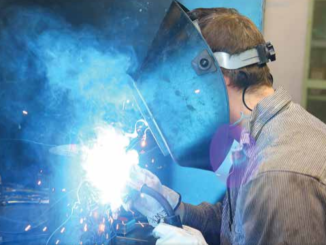
The two biggest stories in Canadian construction this year should be how the energy investment projects pan out in the west and how the industry continues to try to deal with labour shortages across the country, say industry experts.
The $40 billion LNG project in Kitimat, BC, tops the list of those energy projects, but there is also the twinning of the Trans Mountain pipeline and the Line 3 pipeline replacement project, which is nearing completion, among others. “There is a potential for delays on some of those projects, however, so I’ll be watching carefully if they keep with the timeline we’re expecting or if they will get delayed a little bit,” says Robyn Gibbard, a senior economist at the Conference Board of Canada.
Canadian Construction Association President Mary Van Buren is keeping her eye on the energy sector, too, along with how quickly all of the $180 billion of federal infrastructure money will be doled out. “We have seen some progress in committed dollars versus last year—so now each province or territory has at least 5% committed—but the flow of funding is still slow,” says Van Buren. As of writing, only about 5% of the 2018 dollars have been committed in Ontario, while in Alberta and BC, about 75% and 60% of those dollars have been earmarked, respectively.
Regionally, Gibbard believes the energy sector in Alberta will pick up this year, but commercial construction is going to be quite weak there. “And that’s just because right now they have vacancy rates of 27% in downtown Calgary and 18% in Edmonton. So even if things are turning around there, it’s going to be a long time before all of that space is used up.”
Toronto has a downtown commercial vacancy rate of close to 3%, while Vancouver’s is near 4%, so there should be strong commercial construction numbers in those cities this year, says Gibbard.
The weakest construction sector in 2020 will likely be residential, says Gibbard, and that’s largely because of the mortgage stress test rules and the Bank of Canada’s interest rate, which is tied for the highest in the G7. Governments in Toronto and Vancouver are also enacting policies to deflate housing markets, which will mean less construction there in particular. One bright spot is Montreal, which should continue to see strong residential construction numbers.
In general, though, Van Buren believes that the construction industry will continue to be “on fire” across the country, particularly in Ontario, BC, and PEI, and that will continue to put pressure on labour needs. “The positive is that it’s now reached almost national consensus that there is a workforce challenge,” she says, “and immigration is moving up on the agenda in terms of how we attract people.” Still, she adds, there isn’t an easy immigration solution, especially when you consider that many new Canadians have not worked in the trades.
New recruitment programs are showing some success, however, including BC’s Builders Code initiative and PEI’s Island Builder campaign. This March, the Canadian Construction Association will introduce its own, called Talent Fits Here. “It will position the industry as a very vibrant and diverse career opportunity, whether you’re a woman, whether you’re a trades person, whether you’re a lawyer,” says Van Buren.
But a growing number of industry watchers believe that technology will have to be a bigger driver of solutions to the workforce problem than it has been. Right now, about 12 people are employed for every $1 million in construction output, while for all goods producing industries, that figure is close to seven people. “That seems worrying if you’re talking about a retiring workforce, but the flipside is that because the industry relies so much on labour, it has more room to automate than most industries,” says Gibbard. “There will come a point when labour becomes even more scarce that it will make sense to invest in equipment that replaces people. It’s tough to say when that will happen, but if things keep going the way they are, we should expect to see that more and more.”
On the regulatory and policy side, one of the biggest pieces of recent news was that federal prompt payment legislation received royal assent in 2019. A number of provinces have passed or in the process of developing similar legislation, including Nova Scotia, New Brunswick, Manitoba, Saskatchewan, Alberta, and British Columbia.
Another legal development that could have wide implications was the Supreme Court of Canada’s December decision to uphold the use of reprisal clauses in tender documents. The case involved the City of Burnaby using a reprisal clause against J. Cote & Son Excavating. That clause essentially stated that the city would not accept tenders from any party that had sued the city within the previous two years. “This is taking away your legal rights to sue, and so this is of deep concern to the industry,” say Van Buren. “Right now, we’re gathering internally to look at how we are going to raise this issue and advocate with our members to change the legislation.”
The deepest concerns of the industry in the year ahead, however, continue to be workforce shortages and the energy investment projects. The latter will be what Robyn Gibbard keeps his eye on in particular in 2020. “It’s definitely the biggest story in our forecasting, and I think it will have the largest impact for this year and the years after.” ■



